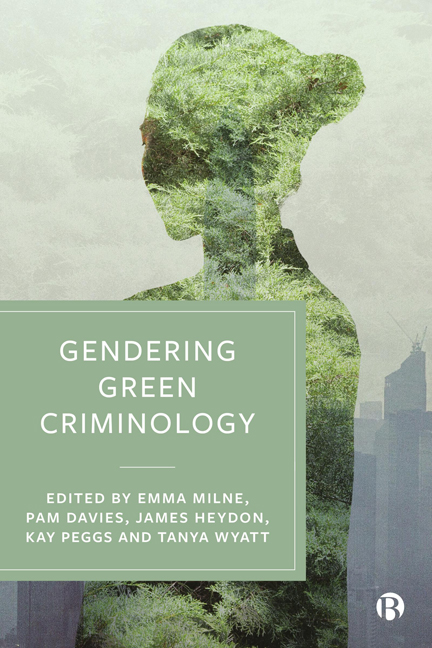14 - ‘To Preserve and Promote’: Gendering Harm in Green Cultural Criminology
Published online by Cambridge University Press: 28 March 2024
Summary
Introduction
Green criminology is an invitation to rethink how we conceptualise categories of harm and who the offenders or victims are (for example, Agnew, 2012; Sollund, 2017; Brisman and South, 2018). Accepting this invitation is no small feat. Feminist scholars have an established history of outlining the social and environmental repercussions of traditional, Western expressions of masculinities (Carson, 1962; Merchant, 1980; Plumwood, 1993; MacGregor, 2009). In this chapter I will take a cultural criminology approach to examine how masculinity serves to shape cultural understandings of harm while simultaneously justifying harmful activities associated with resource development in the oil and gas industry of the Canadian province of Alberta. I will illustrate how gendered cultural discourses ‘turn elite beliefs and values into common sense perceptions’ (Seiler and Seiler, 2004: 173–4) and foster public support for industrial development that is harmful both socially and environmentally.
Cultural green criminology
I begin this inquiry by considering what differentiates those harms which are criminalised under the law and those which scientific evidence would caution do have the potential to cause significant harm but are not yet criminalised. Cultural dynamics like the distribution of power within society determine the meaning of crime and, therefore, what harms will be criminalised (Ferrell et al, 2015). The distinction between political protest or civil disobedience, for example, is often a fine line. In many cases, scientific research recognises environmental harms that the law fails to capture (Lynch and Stretesky, 2001). In other situations, the law determines what counts as scientific evidence, often to the benefit of state interests (for example, Whitt, 2009). But as with the beginning of every apocalyptic film, the warnings of scientists often go unheeded, with environmental laws reflecting the economic interests that benefit from ecological withdrawals and additions (Stretesky et al, 2014). For example, ecological additions, like pollution, or the withdrawal of resources, are often framed as unfortunate but necessary costs of progress (Brulle and Pellow, 2006; Gould et al, 2008). Of course, this does not mean that environmental harms are never criminalised. After all, significant portions of both bureaucratic and corporate resources are devoted to navigating the immense regulatory processes meant to prevent unrestricted harm to the environment.Yet regulations rarely capture the full extent of harms, making trade-offs that require further scrutiny.
- Type
- Chapter
- Information
- Gendering Green Criminology , pp. 267 - 288Publisher: Bristol University PressPrint publication year: 2023

